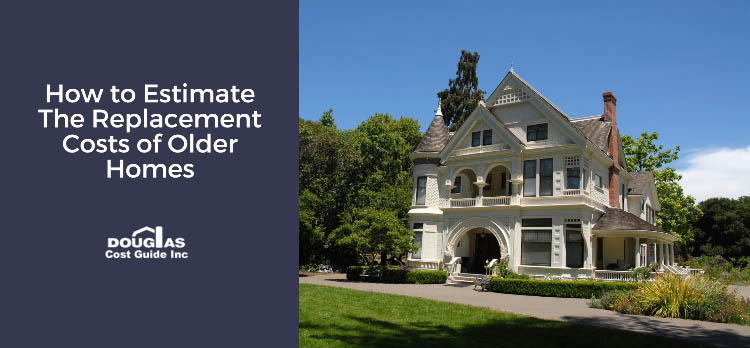The ambiance of an older living space offers quality of life comfort. But getting the best home insurance for older homes can prove challenging. One of the more common mistakes people make is not using an accurate home insurance replacement cost estimate when taking out a policy. Property owners can get the full coverage they deserve by understanding what it takes to restore or replace an older home.
What is Considered to be an Old Home in Insurance?
An older home is typically one built at least 75 years ago. The architectural designs, yesteryear artisanship, and high-quality materials used in older homes make them undeniably attractive. And with a bit of elbow grease and investment, these structures can be restored to their original lustre. Depending on the age of these structures, immediate upgrades such as the following may be necessary to secure home insurance for older homes.
- Plumbing: Homes built during the 1950s or earlier used galvanized steel plumbing that rusts from the inside.
- Electrical Service: Older homes may need to be upgraded from 60-amp systems that involve re-wiring the entire home.
- Furnace Tanks: The life expectancy of a furnace tank hovers around 25 years. An insurance carrier may require an aging tank to be replaced.
In the midst of making necessary cosmetic upgrades, due diligence regarding home insurance for older homes sometimes takes a back seat. However, accurately calculating home insurance replacement cost ranks among the most important aspects of secure homeownership.
Replacement Cost Factors of Older Homes
The designs and materials used to construct these lovely dwellings are often considered expensive and difficult to acquire in today’s market. That’s why using standard square-footage calculations fails to produce a reliable estimate regarding home insurance replacement cost. If you own or plan to purchase an older home, these are cost drivers to consider.
Age
Older homes with select woodworking or unique designs must be effectively addressed in terms of skilled labour and material costs.
Building Codes
Rehabilitating or replacing a structure tasks contractors with meeting today’s stringent building, fire, and safety codes.
Roof Type
The use of natural slate, copper, and other expensive materials was more common 75 or more years ago. Replacement cost dramatically differs from standard asphalt shingles and metal panels today.
Another misstep involves confusing actual cash value with replacement cost. Actual value involves estimating the Replacement Cost and then applying Physical Depreciation, which will reduce the settlement amount from a loss. The cost of replacing a badly damaged or destroyed house can be very different, especially an older one. If you are not adequately covered based on full home insurance replacement cost, homeowners may be forced to reach into their bank accounts or settle for a less nostalgic home.
Douglas Cost Guide Delivers Accurate Estimates for Replacement Costs of Older Homes
The Douglas Residential Cost Guide provides a valuable resource for community members who own older homes. Premium materials and nuanced architecture make determining home insurance replacement costs challenging. The Douglas Cost Guide brings 30 years of experience to bear and accounts for the unique elements of older homes. Widely accepted as the industry standard, homeowners can access the user-friendly platform and generate a reliable replacement estimate insurance carriers will respect.

